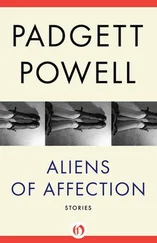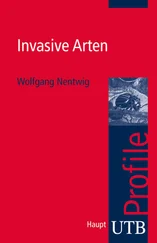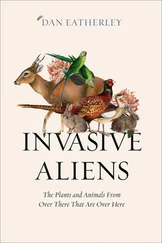Various other animals were imported for nutrition, status and religious reasons, with the remains of pheasant, peafowl, guinea fowl and donkey all found occurring in Roman sites. Elephants were the most impressive creatures brought to Britain; the Emperor Claudius used them to intimidate his new subjects soon after his victory – their stink had the added benefit of panicking enemy horses – although the tuskers’ visit seems to have been fleeting. Archaeologists are intrigued by the discovery at Fishbourne and on the Isle of Thanet, Kent, of numerous bones of fallow deer, a variety hailing from the Anatolia region of modern-day Turkey. Analyses of the deer teeth at both sites indicate well-established, breeding populations, a finding that hints at the existence of what might turn out to be Britain’s earliest deer parks.
As with so many non-natives, the story of fallow deer is far from straightforward since they vanished with the Romans around 400 CE. It was long assumed that the species only returned to Britain with the Normans, but recent radiocarbon dating work suggests they were around just before the Battle of Hastings. Either a few of the Roman deer hung on in the wild, or more likely, small-scale reintroductions, perhaps as novelty items, continued to occur over the course of succeeding centuries.
Sometimes creatures were kept for company alone. That seems to be true both for natives, such as ravens and crows, which were popular pets among the soldiers in Iron Age and Roman Britain, and for the more exotic. Examples of the latter included the Barbary macaque, a monkey whose bones have been recovered from Roman sites at Wroxeter, Dunstable and Catterick.
The Romans weren’t averse to the odd invertebrate too, notably snails, new species of which were introduced as a delicacy. The pot lid, or Burgundy snail remains the most popular of several edible types that now support a multi-million-pound global escargot market. These days snails are largely absent from menus this side of the Channel, where they are regarded as vermin. Indeed, the 5,000 tonnes of molluscicide applied every year to keep them at bay could fill two Olympic swimming pools.
Most creepy-crawlies arriving and spreading during Roman times came unnoticed as hitch-hikers, such as grain weevils. The earliest British remains of these and other insect pests of food stores show up at sites in London and York dating to within the first decades of the Roman occupation, suggesting that infested grain was imported from Europe soon after the invasion. Invertebrate parasites of livestock and people flourished as new forts, towns and cities sprang up, and human population density grew. The Romans were known for their close attention to personal hygiene, with flushable latrines and heated bathwater. Yet, these measures failed to arrest the proliferation of tapeworm, liver flukes, roundworm and whipworm, along with swarms of fleas, lice and the odd bed bug. The widespread prominence of fish tapeworm, a gut parasite attaining nine metres in length, is something of a puzzle since the species is rarely evidenced in earlier, Bronze and Iron Age sites. Here, the Roman weakness for a peculiar condiment called garum may have been the cause. This fermented sauce, a blend of raw freshwater fish and herbs, left to rot in the sun, was traded across the empire and could have helped spread fish tapeworms.
From the late fourth century, the Roman Empire began to wither. Soldiers stationed in Britain were recalled to fight insurgencies on other fronts and by 410 CE the northern outpost had been abandoned. What happened over the next six centuries, traditionally dismissed as the Dark Ages for the paucity of written records, is vague. Roads and other imperial infrastructure disintegrated, vibrant towns and cities decayed, and trade declined, all slowing the influx and spread of new species. Yet, this was a period of great human churn as populations from Ireland, Scotland and other outlying regions of the British Isles moved into undefended territory, joined by continental immigrants, particularly from Scandinavia, the Netherlands and Germany. These movements of Angles, Saxons, Jutes and other peoples would have instigated fresh introductions, deliberate and accidental, but for now the details are lost in time.
The elite are always keen to improve upon what nature has provided and, when it comes to reshaping and enhancing the landscape, few matched the enthusiasm of the Norman invaders of 1066. With a mania for hunting, Britain’s newest overlords depopulated large tracts of territory in the interests of blood sport. Dozens of hunting grounds, or ‘forests’, were designated, encompassing not just wooded areas but moorland, cultivated fields, and even whole villages, from which the occupants were banished under ‘forest law’. Any animals which could jeopardise the chase were also dealt with with ruthless efficiency: sheep and goats, whose grazing could damage the forest vegetation, were removed, and unwanted dogs hobbled in a procedure known as ‘lawing’, which saw the claws from one foot lopped off with mallet and chisel. The Anglo-Saxon Chronicle for 1087 implies that William the Conqueror’s focus was native game: ‘Whoever slew a hart or a hind [male or female red deer] was to be blinded. He forbade the killing of boars even as the killing of harts. He loved the harts as dearly as though he had been their father. Hares, also, he decreed should go free.’ Yet, William and his successors seemed happy to bring in, and protect, foreign quarry species.
This included the fallow deer. Like the indigenous red deer, fallow offered fabulous sport for the mounted hunter and hound by galloping away across the countryside. (The roe, Britain’s other native deer, was far more skittish and a bit of a killjoy: its instinct was to hunker down in thick undergrowth at the least sign of danger, and it could even die of fright.) As discussed, small numbers of fallow deer may already have been present in Britain before the Normans; certainly, by the beginning of the twelfth century the species is known to have been well established. There’s also a possible Sicilian connection here.
After a 30-year campaign, the Normans completed their capture of this Mediterranean island from the Arabs in 1091. Perhaps impressed by the parks of wild animals, including fallow deer, kept by Sicily’s previous rulers, in 1129 King Henry I had 11 kilometres of wall built around his own estate at Woodstock, Oxfordshire, to which he introduced lions, leopards, camels and a porcupine. And fallow deer. According to the archaeologist Naomi Sykes, ‘This collection, which is the direct ancestor of London Zoo, was not simply a frivolity; it was a metaphor for the Norman Empire, a statement that the Norman kings had power not only over the wild creatures in their possession but also over the countries from which the animals derived.’ In addition to being far more manageable than red and roe – their scientific name Dama comes from the Persian for ‘tame’ – fallow thrived on poor quality land, so proved an immediate hit. By the 1300s, the deer had been stocked in some 3,000 parks across Britain; in England alone, these enclosures covered the equivalent of 2 per cent of the entire land area. The modern distribution of fallow deer, whose UK population probably exceeds 200,000 individuals, matches that of the medieval parks from which they escaped. (According to Charles Smith-Jones of the British Deer Society, fallow are remarkably loyal to their home areas and seem inclined to heft strongly to them.) Like other deer species – both native and introduced – the fallow is today regarded as a crop pest, an unwitting cause of vehicle collisions, and a potential carrier of disease from bovine tuberculosis to foot-and-mouth.
The common pheasant was already successful before its introduction to Britain, having colonised a swathe of Eurasia from the western Caspian region to Japan. As discussed, in Britain its bones first turn up at Roman sites, and historical documents – most of them written after the fact – indicate that pheasants were sometimes eaten as a luxury prior to the Norman invasion. For instance, in 1059, King Harold is said to have offered the bird as a privilege to the canons of Waltham Abbey in Essex, a gift deemed equivalent in value to a brace of partridges or a dozen blackbirds. In 1098, Radulfus, the Prior of Rochester, dispatched to his monks 16 pheasants (along with 1,000 lampreys, 300 hens, 30 geese, 1,000 eggs, 4 salmon and 6 bundles of wheat). A contemporary and perhaps more dependable record – a bursar’s roll at Durham Priory dated to the reign of the Saxon king Edward the Confessor (1042–1066) – includes a purchase of one pheasant and 26 partridge. Pheasants may first have been kept in royal parks and forests, along with fallow deer, and their increasing prominence on banquet menus from the late twelfth century implies that they had by then naturalised. In 1251, Henry III ordered 290 of them for his Christmas feast, and by the late 1400s, pheasants warranted legal protection from the Crown. These early imports were in fact the ‘Old English’, or colchicus , subspecies from the Caucasus and lacked the distinctive white neck ring of the torquatus race, originating in China, which is these days released for shooting.
Читать дальше











